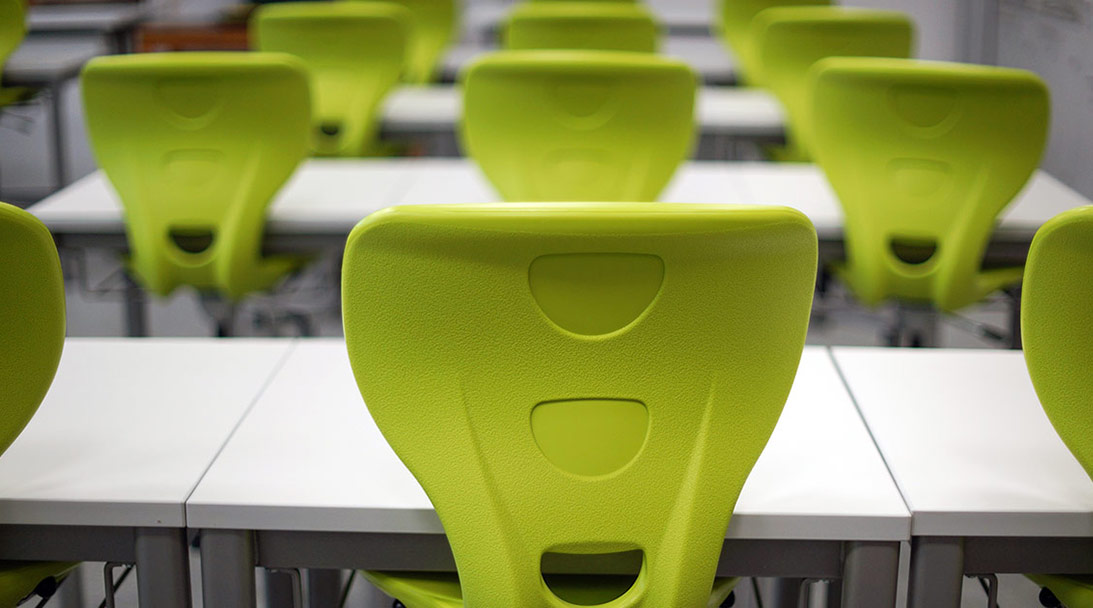Many educators are experimenting with the idea of a flipped classroom model. What does this mean, how has the concept evolved, how do AV solutions play a role and where is this idea headed?
Imagine a learning environment where students essentially teach themselves instead of sitting through a lecture taught by their instructor. They go home, study the course material on their own, then return to class to complete exercises, assignments and applications of the knowledge as a group.
Such a concept is what is known as a “flipped classroom”, and it has rapidly been gaining steam, due in large part to the Internet, digital media and audio visual technologies.
Not as new as you think
Believe it or not, this educational concept isn’t completely novel; it has actually been in existence since my grade school days in the 1970’s.
Back then, students who were deemed learned, capable, and who possessed a high degree of reading comprehension were placed in a “self-study group” and were asked to read certain pages of the classroom textbook on their own time to introduce themselves to a specific topic.
Once back in the classroom, this small group of students would sit together in a corner of the room to discuss their learnings. This was an opportunity for them to ask questions, teach one another and challenge and evaluate each other’s understanding of the material.
Typically this learning model was facilitated by worksheets, assignments or projects requiring application of the newly gained knowledge. At some point in the class the teacher would dedicate a few minutes to engage solely with this small group to answer their questions, clarify details, settle (or further fuel) debates, assess understanding and assign next steps and/or new material for study.
Present-day debate
Fast forward thirty-five years and the concept of a flipped classroom has drawn a considerable spotlight – accompanied by healthy debate among parents and teachers alike. The idea does not seem new to me; I lived it as a grade 6 student in 1979. (I’ll pause now while you do the math…correct, I am now 47).
What’s interesting to me is that the vision of independent learning paints a picture of a classroom where this independent study approach becomes the regular program provided to the majority of the class, and the lecture style of teaching may then be offered to a small select group of students who may be better-suited to this more traditional approach.
Historically, this has always been the other way around—with traditional teaching being the mainstream and independent learning reserved only for the select few.
What is different about students today that makes it possible for the majority of the class to flourish in a flipped classroom when only a handpicked few were expected to do so in the past? Are students smarter and more independent now than they were 35 years ago? I don’t think so.
So then what makes them better able to learn on their own? In a word: resources. Easy access to an endless sea of resources. And for the most part, these resources are made available in a visual format, which ties-in nicely with the preferred learning style of the majority (approximately 65 percent of the population are visual learners, according to Visual Teaching Alliance).


Flipping the classroom: What makes it work?
And from where would students gather these infinite resources? The Internet, of course.
Present-day educators can utilize AV solutions to capture the video and audio from lectures or other presentations and upload them to the web, providing students with an almost endless quantity of digital learning material previously never thought possible.
To illustrate, a teacher might record their lecture, edit it as they see fit, upload it to YouTube and provide the web link to students so they can access the material online. Students in this flipped classroom might arrive home, pull out their laptop or tablet, and open the YouTube app to stream the learning material at their convenience.
Whereas back in 1979, there was certainly no YouTube. You had only a singular source of textbook print from which to study, and you had to make the most of it. In a worst-case scenario you might have even been forced to head to the local library and consult an encyclopedia (or a Funk and Wagnalls, for those familiar) if the textbook content wasn’t enough.
It wasn’t easy to be an independent learner in 1979. If you didn’t possess a keen interest in outside learning coupled with exceptional reading skills, then the flipped classroom concept simply wasn’t an option for you. Or, more accurately, the resources available at that time were not well suited to your needs as a student.
Today that’s all changed. Textbooks are still a classroom staple to be sure, but video is the new king of educational media and platforms such as YouTube provide easy access to a plethora of instructional videos on just about any topic.
No longer is independent learning restricted to the enthusiastic readers of the world. It’s opened up to include a much wider set of students.
Wrapping it up
In the end, it’s not that the majority of the students of the 1970’s were ill-suited to independent learning; the resources available for independent learning simply were not well suited to each individual student’s their specific educational needs.
So next time you think of the classroom, keep in mind that the educational sphere is changing. AV technology and digital solutions are being applied in new ways to enable the development and delivery of innovative learning material for the latest generation of students.
Is a flipped classroom concept beneficial for our students? What are your thoughts? Let us know by leaving a comment below.
Additional information
This short video by The Center for Teaching and Learning at The University of Texas does a nice job explaining the flipped classroom.
What is a flipped class?

